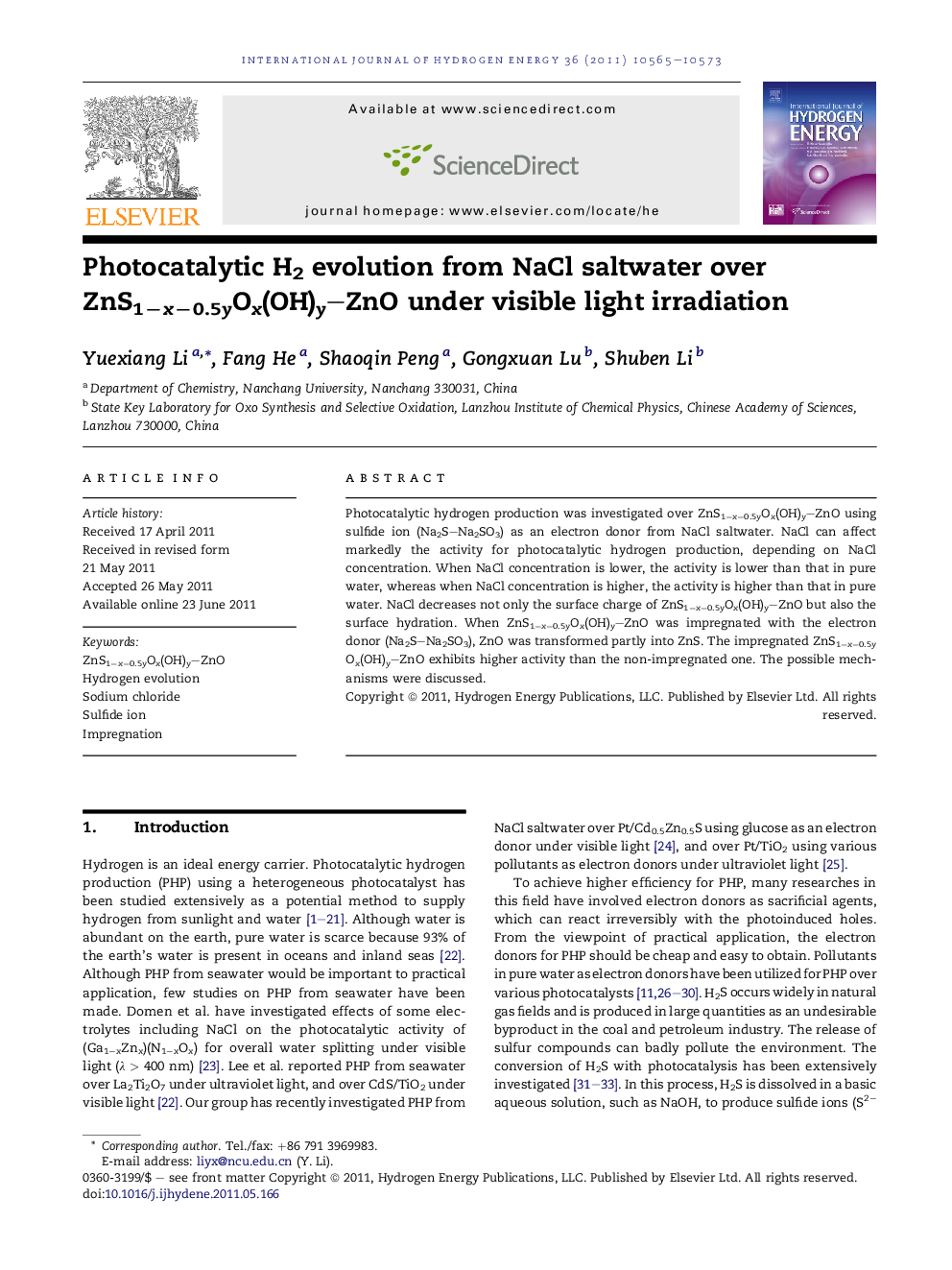| Article ID | Journal | Published Year | Pages | File Type |
|---|---|---|---|---|
| 1277523 | International Journal of Hydrogen Energy | 2011 | 9 Pages |
Photocatalytic hydrogen production was investigated over ZnS1−x−0.5yOx(OH)y–ZnO using sulfide ion (Na2S–Na2SO3) as an electron donor from NaCl saltwater. NaCl can affect markedly the activity for photocatalytic hydrogen production, depending on NaCl concentration. When NaCl concentration is lower, the activity is lower than that in pure water, whereas when NaCl concentration is higher, the activity is higher than that in pure water. NaCl decreases not only the surface charge of ZnS1−x−0.5yOx(OH)y–ZnO but also the surface hydration. When ZnS1−x−0.5yOx(OH)y–ZnO was impregnated with the electron donor (Na2S–Na2SO3), ZnO was transformed partly into ZnS. The impregnated ZnS1−x−0.5yOx(OH)y–ZnO exhibits higher activity than the non-impregnated one. The possible mechanisms were discussed.
Graphical abstractWhen NaCl concentration is lower, the activity is lower than that in pure water, whereas when NaCl concentration is higher, the activity is higher than that in pure water. The impregnated photocatalyst (with Na2S–Na2SO3) exhibits much higher activity than non-impregnated one.Figure optionsDownload full-size imageDownload as PowerPoint slideHighlights► ZnS1−x−0.5yOx(OH)y–ZnO as photocatalyst and Na2S–Na2SO3 as electron donor. ► Effect of NaCl concentration on photocatalytic H2 evolution. ► The photocatalytic activity increases markedly in concentrated NaCl saltwater. ► The photocatalyst impregnated with Na2S–Na2SO3 exhibits higher activity.
